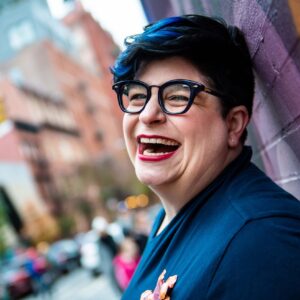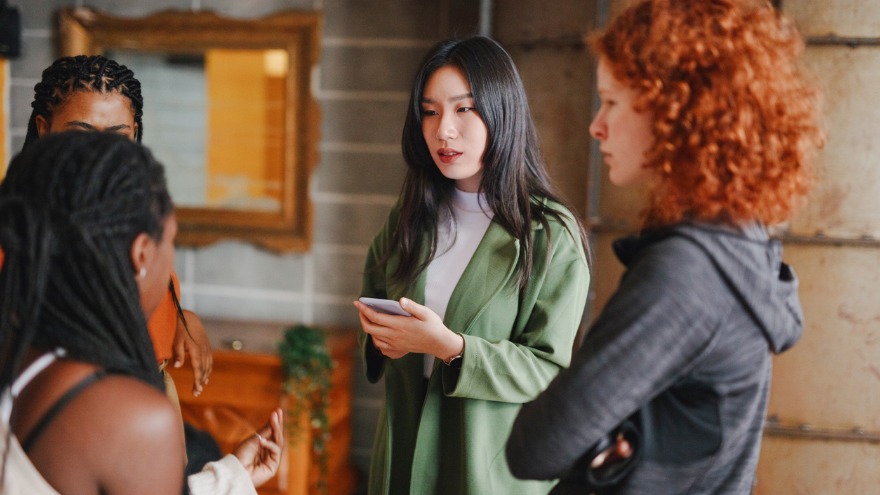Who am I excluding? DEI

After almost 20 years of Diversity, Equity and Inclusion (DEI) education and consulting work, I have gotten plenty wrong. I worked in this space for years without examining my own privileges or how I even show up in a space to others. Not taking responsibility for my own actions and collecting vocabulary words negatively impacted my ability to create equitable opportunities that included diverse perspectives and experiences. I have learned over the past 5 or so years how to correct these errors and also expect more.
To be fallible and prepared means that I don’t have to react defensively and can respond in the present moment from a place of connection and responsibility (at least some of the time—I still struggle with this, of course). It took me a while, even as a DEI practitioner, to shift my focus to my learning journey and not my collecting habit.
I mean a learning journey literally because being self-reflective and responsible for who and how I am doesn’t mean focusing on diverse experiences and a current vocabulary. Pursue education in a manner than leads to more questions, not expertise. More knowledge should lead to an acute awareness of what you don’t know, and this is the foundation of a learning journey. Often, you don’t even know what you don’t know.
Course Corrections
So, now that you are primed to ask questions instead of hoard answers, what is one thing you can do to be less wrong about DEI initiatives?
The best question I would ask any client of mine when reviewing their DEI practices is simple, but not easy to answer. Who are you leaving out? Most exclaim, “No one!” in response, but this can’t be true. You don’t have a venue, enough chairs and certainly not a big enough budget to include 100 percent of the global population.
You and I make choices both consciously and unconsciously, because of our positive and negative biases that inform our habits. Our informed habits shape our decisions about who we do and do not target, invite, include and/or engage with. We discriminate. Recognizing this catches our behaviors up with our minds. Bad diversity trainings have taught us that we aren’t allowed to discriminate (at least not according to protected classes that the law shields from prejudicial judgment). The biggest mistake we all make is not noting the difference.
Think about an event you are currently planning. I didn’t mean to make you stressed out! Let’s just pick tonight’s dinner. I am a terrible cook, but I don’t do dishes, so I have made a lot of mediocre dishes over the past year.
Sometimes, I intentionally try something new or bring out an old favorite. Sometimes, I find myself halfway through a box of Cheezits and I don’t even remember retrieving from the cabinet. In my family, I don’t cook beans and potatoes as part of the same meal, but I put multiple forms of dairy on a baked potato without thinking about it.
Certain hot sauces are not appropriate for different dishes and I don’t have these rules written down. I encourage you to think about your next meal and see what you consciously or unconsciously bring to the menu decision table as well as what you do intentionally or unintentionally. Bonus if you can also identify a positive or negative bias that is present in your choices. If you can come to terms with the fact that you make choices, then you can become more conscious of those choices.
Charting Choices
| Conscious | Unconscious | |||
| Intentionally | + | – | + | – |
| Unintentionally | + | – | + | – |
When thinking about DEI initiatives, see if you can complete the same chart. I will use my current clients as an example to see if that helps you.
Membership qualifications are the easiest examples of intentional conscious choices. Someone has to pay dues, be in good standing and meet specific standards according to the association in order to become and remain a member. If these standards aren’t met, then the organization intentionally removes or suspends the person. Unintentionally, some folks may be interested in membership, but not purposefully targeted.
For example, a REALTOR Association I am working with has 5,000 members, but only 1500 are active in both the industry and association. Some 3,500 members meet the standards of membership, but only 1,500 are active in the industry, so who are the 2,000 paying members that aren’t active in the industry or the association? It turns out that a lot of people pay for access to an MLS or a credential for other reasons. Even more folks maintain membership and licensures but haven’t made a professional leap just yet. These would all be consciously targeted markets, some intentional and others unintentional. If this organization launches a membership drive, it likely won’t target all of the types of members directly and may make some unconscious choices with the language, images or marketing platforms.
More: DEI Resources for Meeting Planners
Board Rooms are another great example that can help you fill in the chart. Often organizations strategically include DEI in their plans and statements, and yet the board tables remain pretty homogeneous in race, age, experience, class, ideology, etc. When I work with boards, I often hear something like, “We have done all of the things, they just don’t come.” Well, they are telling you that they don’t feel invited. If you truly want to include others different than who is already at the party, you may have to invite them in a different way. Unconsciously, most boards do the same things with new information so that the same people get the new information, but new people are still left out from these communications.
Helpful Questions
So, when asked for one question to get started in the right direction, I simply ask, “Who are you leaving out?” The answer to this question will help you clarify who you are inviting, but starting with the invitations doesn’t seem to allow room for the rest of the chart.
- Who doesn’t respond and you are glad they don’t?
- Who does respond and you wish they didn’t?
- Who doesn’t respond and you wish they did?
- Who does respond as you hope they will?
Jessica Pettitt has been stirring up DEI Conversations for almost two decades with her concept of Good Enough Now—how doing the best you can with what you have some of the time is better than nothing never.




